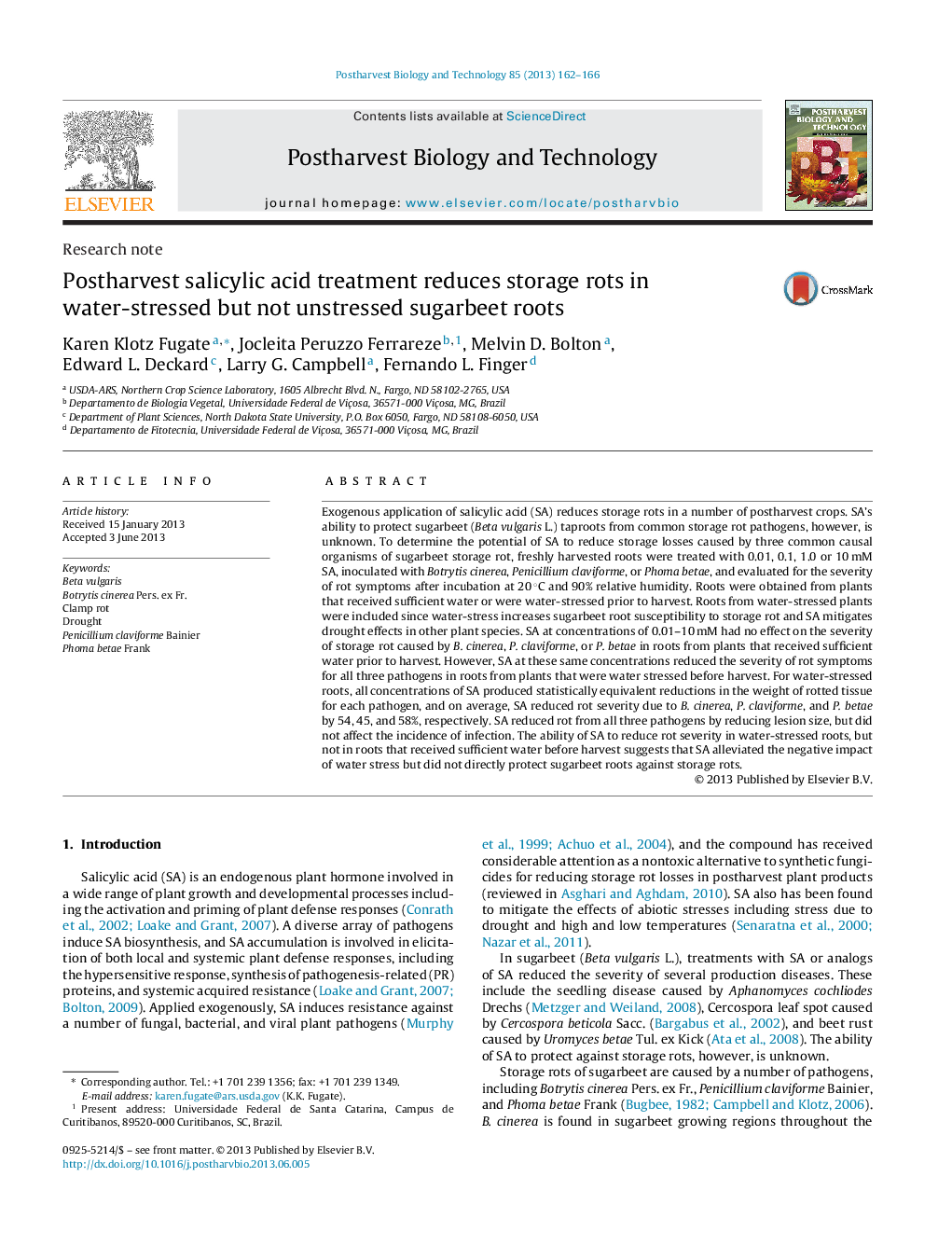| کد مقاله | کد نشریه | سال انتشار | مقاله انگلیسی | نسخه تمام متن |
|---|---|---|---|---|
| 4518414 | 1625009 | 2013 | 5 صفحه PDF | دانلود رایگان |

• Salicylic acid's (SA) ability to reduce sugarbeet storage rot due to Botrytis cinerea, Penicillium claviforme and Phoma betae was determined.
• SA had no effect on storage rot severity for roots obtained from well-watered plants.
• SA reduced storage rot severity when plants were water stressed before harvest.
• SA reduced lesion size but not incidence of infection in water-stressed roots.
• SA likely to mitigate water stress but not directly protect roots from storage rot.
Exogenous application of salicylic acid (SA) reduces storage rots in a number of postharvest crops. SA's ability to protect sugarbeet (Beta vulgaris L.) taproots from common storage rot pathogens, however, is unknown. To determine the potential of SA to reduce storage losses caused by three common causal organisms of sugarbeet storage rot, freshly harvested roots were treated with 0.01, 0.1, 1.0 or 10 mM SA, inoculated with Botrytis cinerea, Penicillium claviforme, or Phoma betae, and evaluated for the severity of rot symptoms after incubation at 20 °C and 90% relative humidity. Roots were obtained from plants that received sufficient water or were water-stressed prior to harvest. Roots from water-stressed plants were included since water-stress increases sugarbeet root susceptibility to storage rot and SA mitigates drought effects in other plant species. SA at concentrations of 0.01–10 mM had no effect on the severity of storage rot caused by B. cinerea, P. claviforme, or P. betae in roots from plants that received sufficient water prior to harvest. However, SA at these same concentrations reduced the severity of rot symptoms for all three pathogens in roots from plants that were water stressed before harvest. For water-stressed roots, all concentrations of SA produced statistically equivalent reductions in the weight of rotted tissue for each pathogen, and on average, SA reduced rot severity due to B. cinerea, P. claviforme, and P. betae by 54, 45, and 58%, respectively. SA reduced rot from all three pathogens by reducing lesion size, but did not affect the incidence of infection. The ability of SA to reduce rot severity in water-stressed roots, but not in roots that received sufficient water before harvest suggests that SA alleviated the negative impact of water stress but did not directly protect sugarbeet roots against storage rots.
Journal: Postharvest Biology and Technology - Volume 85, November 2013, Pages 162–166